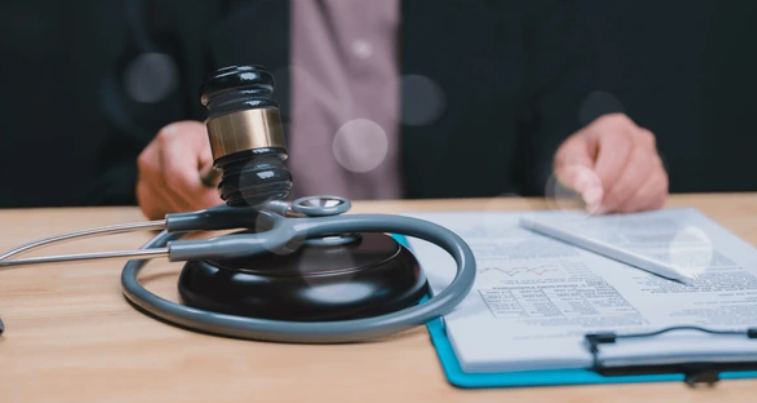Germany’s Boehringer Repudiated Patent on HIV Drug- Nevirapine
- Khurana And Khurana

- Dec 24, 2015
- 3 min read
The Indian Patent Office has repudiated Germany's Boehringer Ingelheim patent on its key HIV drug- Nevirapine, Patent Application Number: 4724/DELNP/2009 entitled “Extended release formulation of Nevirapine”, for a version sold as Viramune XR (extended release), once again forestalling attempts by Big Pharma for "exclusivity" extension on their patented drugs to reportedly block entry of reasonably priced generics.
Boehringer Ingelheim, one of the few family-owned pharma company globally, is working on biosimilars, immuno-oncology and, new treatment options for psychiatric disorders like forms of depression or schizophrenia etc. Globally, it has a strong pipeline in oncology, respiratory, stroke and diabetes prescription medicines - all of which are of importance to the demographics in India, and some of which have already been launched in India. At present, the company has several patented drugs in the domestic market - Xovoltib (afatinib), two biologics Metalyse and Actilyse, Pradaxa anticoagulant, and two diabetes medicines named Trajenta and Trajenta duo.
Some Facts
Boehringer Ingelheim had filed a patent application (application number: 4724/DELNP/2009) in India on extended release of the HIV drug on 20th July 2009, against which, Cipla had filed a pre-grant opposition in 2011, and later on launched its generic version.
Reportedly, the applicant (Boehringer) did not respond to the pre-grant opposition and also did not appear at the hearing fixed for the same on September 15, 2015. N R Meena, deputy controller of Patents & Designs, said in the order, since the applicant did not appear in the hearing fixed under section 25(1) before the controller, and no arguments were offered to rebut the objections raised in the FER (first examination report), and by the opponent, the application for grant of patent is refused.
Objections raised in the First Examination Report (FER)
Some of the below mentioned objections were raised in the first examination report (FER):
Claims1-7, 8-10, 11-14, 15-20 and 21-24 are rejected u/s 3(e) of the Patents (Amended)Act, 2005 as the said claims define a mere admixture resulting only in aggregation of the properties of components thereof.
It is not clear if thecombined agents act together to provide a technical effect that is greater thanjust the sum of the two or more agents alone, or whether the combination is infact a mere juxtaposition with no interaction of the agents.
Claim 1 and dependent claims thereof do not constitute an invention under section 2<1(j)> of Patents Act 1970 (as amended in 2005) as the claims lack inventive step in view of following patent documents:
US2002/0006439
WO00/035419
WO2007/047371
US2002/0068085
Grounds of Opposition
Some of the grounds of opposition that were raised and relied upon by the opponent in the pre-grant opposition include:
Section 25(1)(e): Obviousness and Lack of Inventive Step
Opponent had presented numerous prior arts to demonstrate obviousness and lack of inventive steps for the claims of the impugned application.
Section 25(1)(f): Not Patentable/ Not an Invention –
Claim lack inventive step under Section 2(1)(ja)
The claims of the impugned application falls under section 2(1)(ja) i.e. being devoid of inventive step. The definition of inventive step states that the invention should be a technical advancement over the prior art or it should show economical significance or both and should not be obvious to a person skilled in the art. It was also stated that the alleged invention is neither a technical advancement nor does it give any economic significance.
Claims not a invention as per section 2(1)(ta)
The challenged invention falls under Section 2(1)(ta), being devoid of inventive step as according to the definition of ‘pharmaceutical substance’.
Claims not patentable as per Section 3(d)
The alleged pharmaceutical product (dosage form) as claimed in the impugned patent application does not provide any additional advantage or therapeutic efficacy over the form(s) known in the prior art i.e. 400 mg immediate release form or 200 mg immediate release form.
Claims not patentable as per Section 3(e)
The claimed invention i.e. claims 1 and 2, falls under the Section 3 (e) which clearly states that a substance obtained by a mere admixture results only in a aggregation of properties of components thereof is not patentable. The alleged invention in the impugned patent application is a mere admixture of nevirapine and conventional excipients for extended release for once-daily administration without any demonstration of improvement over the prior art.
Previously, an objection under section 3(e) to the dosage form (pharmaceutical product) in claims 15 and 21 of the original claims was also raised in the First Examination Report.
Section 25(1)(g): the complete specification does not sufficiently and clearly describe the invention or the method by which it is to be performed
Conclusion
After hearing all the parties and considering all facts, the Controller denied patent on HIV drug under Section 3(d) of Indian Patent act.
About the Author: Sugandhika Mehta, Patent Associate at Khurana & Khurana, Advocates and IP Attorneys and can be reached at:sugandhika@khuranaandkhurana.com.





Comments